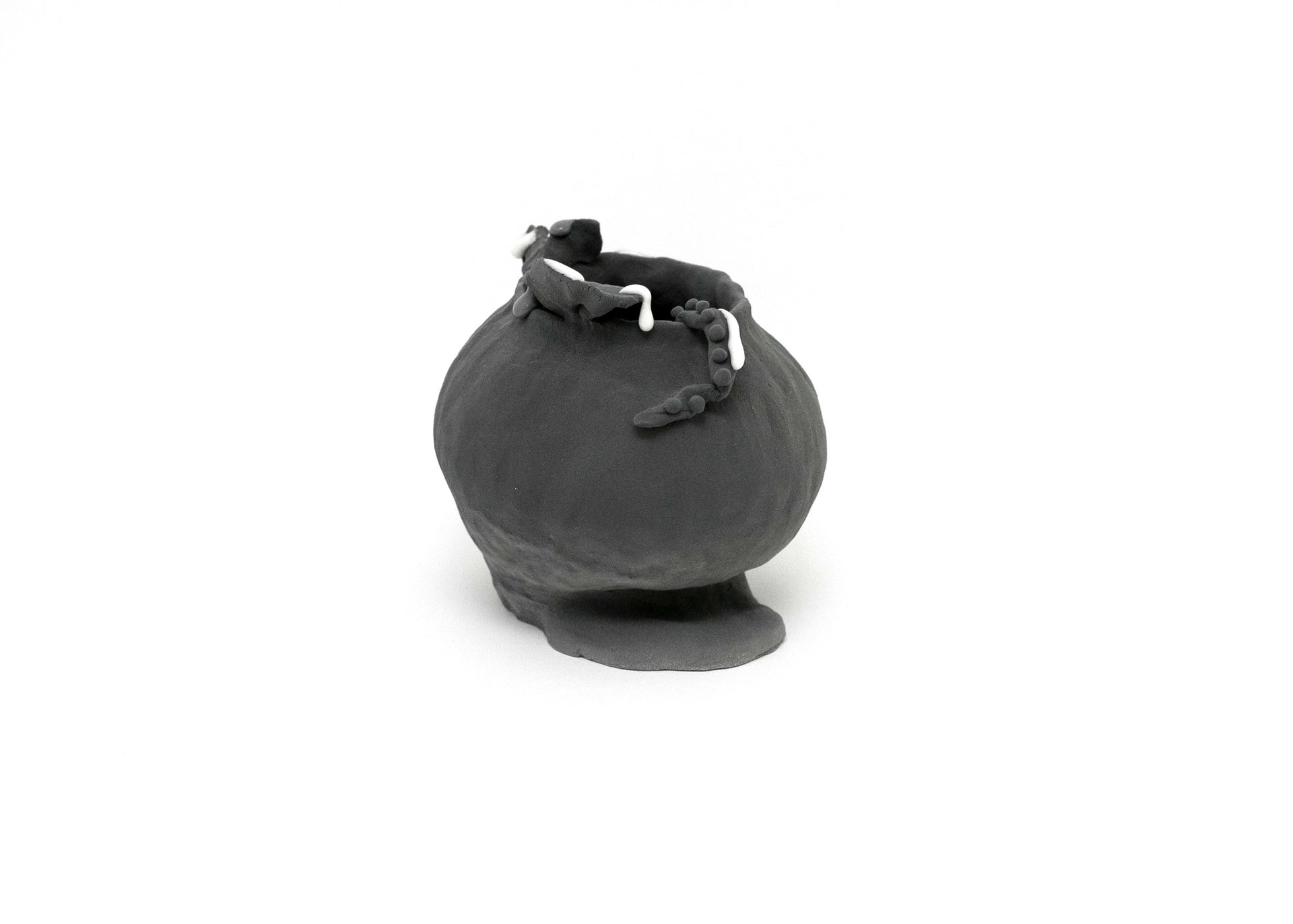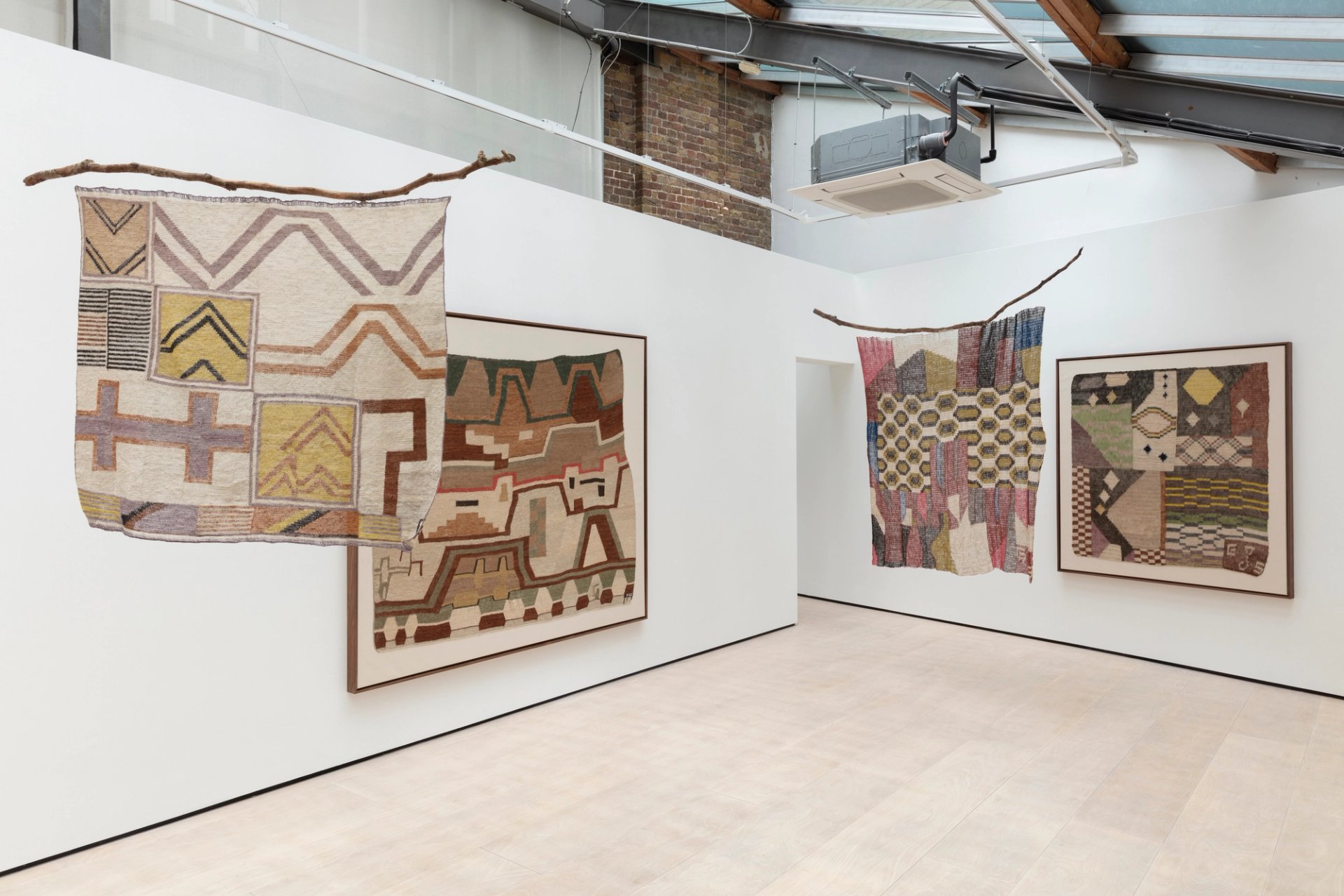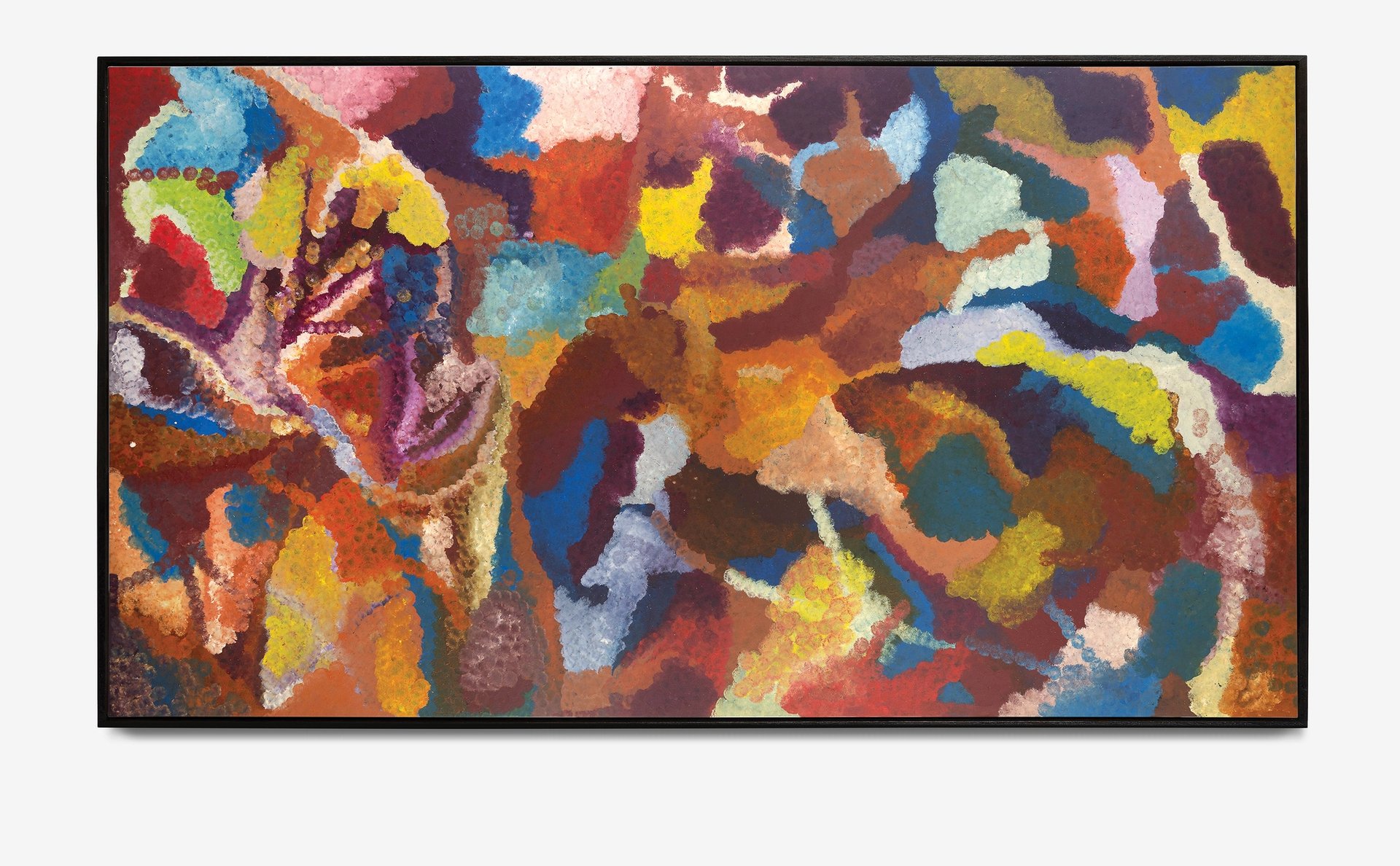Folklore, mythology and tradition: five must-see shows at London Gallery Weekend
Reflecting a broader revival of interest in folklore, mythology and traditional processes and rituals, several exhibitions at London Gallery Weekend this year show artists looking back, not forward, for inspiration—a refreshing antidote to our AI-dominated world.
Some artists are indigenous to a particular culture—the aboriginal artist Emily Kam Kngwarray, for instance—while some are borrowers, such as New Zealand-born Francis Upritchard, a self-confessed “magpie” who collects influences from ancient mythology to science fiction.
Here are five shows of female artists that bring tales and traditions from Argentina to Australia to South Korea to the streets of London.
Anna Perach’s Uncanny Valley (2025), made from Axminster yarn and artificial leather
Copyright The Artist
Anna Perach: A leap of sympathy
Richard Saltoun, 41 Dover St, W1S 4NS, until 24 June
Born in Ukraine but now based in London, Anna Perach takes her exhibition theme from the work of the philosopher Henri Bergson, who said that we must take a “leap of sympathy [faith]” in order to empathise with and relate to others. Perach’s tufted, wearable sculptures, drawings and glass sculptures, set out across Saltoun’s three Mayfair spaces, explore how ancient folklore and storytelling can influence our personal narratives and sense of self, and society’s idea of identity and gender.
Perach’s protagonists often play with the idea of the “monstrous” body—witches and the like—and one body of work central to this exhibition is The Uncanny Valley, a creepy procession of 12 tufted heads leading visitors through the gallery. Some feature multiple or oversized eyes, some none, playing with the idea of gaze and identity. The work takes its inspiration from the Russian folktale Vasilisa the Beautiful, in which a series of heads surround the witch Baba Yaga’s house in the forest.
A leap of sympathy will travel to East Gallery in Norwich in September 2025.

Francis Upritchard’s Any Noise Annoys an Oyster (2024), in balata rubber and bronze
Courtesy of the artist and Kate MacGarry, London
Francis Upritchard: Sing Siren
Kate MacGarry, 27 Old Nichol Street, E2 7HR, 6 June-12 July
Francis Upritchard’s uncanny, darkly playful sculptures draw on all manner of inspiration—ancient art, folklore, the natural world and science fiction. “I’m magpieing,” she once told The Art Newspaper, “I’m always mixing.”
The New Zealand-born artist’s new show with Kate McGarry includes figurative sculptures in rubber, bronze, ceramic, textiles, stone and glass, alongside works on paper, made initially for her recent exhibition at Kunsthal Charlottenborg, appealingly titled Any Noise Annoys an Oyster. Her works have a way of evoking everything and nothing in particular—forms reminiscent of mythological animals, dinosaurs, and ancient creatures. “I try and embrace how incorrect memory can be,” Upritchard says in a statement. “I’m working the material in reference to human bodies, but remembered human bodies. For me it’s quite important, the incorrect and the not looking just right or just so.”
Mythological inspiration is strong in these new works—such as Medusa, with eels not snakes for hair, and Sing Siren, references the mythical women who would lure sailors with their song—as are Classical references, in the forms of ceramic vessels decorated with scenes from Greek mythology.

Soyoung Hyun, Shadow (2024)
Courtesy of the artist
Soyoung Hyun: Invitation to a Ritual
IMT Gallery, Unit 2, 210 Cambridge Heath Road, E2 9NQ UK, until 29 June
This, the first UK solo show for Paris-based Soyoung Hyun, includes two bodies of related work by the South Korean artist: her Purification box and Shadow series. Both bodies of work deal with memory and the blurred line between presence and absence, drawing on personal and cultural rituals as well as Japanese ceremonial vessels and Beninese ceramics.
The Purification box series consists of clay vessels decorated with volcanic stones from Mount Etna, serving as memory boxes, to hold and externalise past traumas, obsessions and habits. The Shadow series, meanwhile, takes its inspiration from Korean folklore, in which shadows are seen as evidence of life. Hyun uses clay to sculpt the shadows of vases and flowers into solid form, giving permanence and weight to something ephemeral and intangible.

Installation view, Claudia Alarcón & Silät: Choreography of the Imagination at Cecilia Brunson Projects
Photography by Lucy Dawkins, courtesy of Cecilia Brunson Projects
Claudia Alarcón & Silät: Choreography of the Imagination
Cecilia Brunson Projects, 3G Royal Oak Yard, Bermondsey St, SE1 3GE, until 25 July
Cecilia Brunson, originally from Chile, champions the work of South American artists in a very personal way, from a gallery attached to her family home in Bermondsey. For London Gallery Weekend, Brunson is showing the work of Claudia Alarcón, an indigenous textile artist from the Wichí community of northern Salta in Argentina. The artist is also part of the Silät collective, led by Alarcón and made up of of 100 multi-generational women weavers from the Alto la Sierra and La Puntana Wichí communities.
Their textiles, perhaps familiar to you from their inclusion in last year’s Venice Biennale, are woven from fibres of the native chaguar plant, a material and practice integral to Wichí culture—the weavings are thought to communicate unspoken thoughts and the messages of dreams and the subconscious. Their geometric designs are part of a part of a strong tradition in South America, and the gallery points out that Anni Albers collected chaguar textiles from Salta, using their design and weaving method as inspiration for her own work.

Emily Kam Kngwarray, Alhalker (I), 1992
© Emily Kam Kngwarray/Copyright Agency
Emily Kam Kngwarray: My Country
5 Hanover Square, W1S 1HQ, 6 June-8 August
Now recognised as a giant of Australian painting, Emily Kam Kngwarray (around 1914–1996) will receive her first solo show at London’s Tate Modern this July. To coincide, Pace will open an exhibition of the Aboriginal artist’s work at its London gallery, in collaboration with the Melbourne-based gallery D’Lan Contemporary.
Kngwarray was an Elder of the Anmatyerr people of Australia’s Northern Territory and custodian of Alhalker, her ancestral country, which runs deep through all of her work. Her paintings also embody the idea of the Dreaming, a foundational concept of Aboriginal culture which encompasses their spiritual beliefs, lived worldview and creation stories.
Although Kngwarray only began painting seriously in 1988 when she was in her 70s, she produced an enormous body of around 3,000 works in the eight years before she died. The group of works on show at Pace chart her development from early organic forms to the minimalism of her last works. It will also include contemporary batik works by Aboriginal and Torres Strait Islander artists inspired by Kngwarray.
• The Art Newspaper is a media partner of London Gallery Weekend




